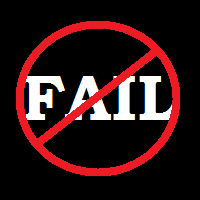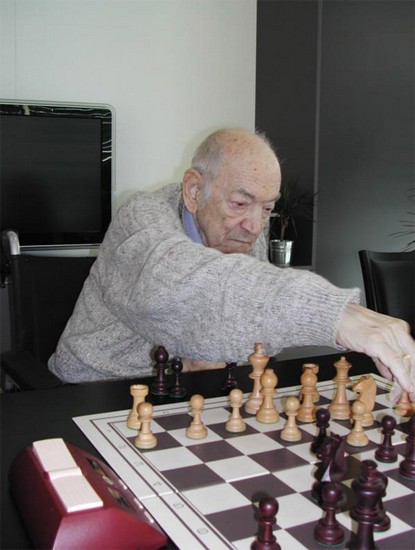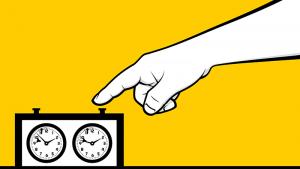
How to Avoid Blunders, Part 1
A few weeks ago, I was surfing through some of my earliest games, played in 2003 and 2004 and recorded in a tattered blue scorebook that has been gathering dust in my closet forever. As I expected, positional blunders appeared in alarming quantities, but I was surprised to find that elementary tactical errors were even more common.
Make no mistake, by 2004 I was a Class C player who solved tactical exercises for at least an hour every day. Indeed, tactics are not only easy to study, but also quite entertaining. As such, many beginners develop a firm grasp on tactical concepts long before they master essential strategic precepts.
We all know of Kramnik's famous mate-in-one blunder against Deep Fritz in 2006, and of Fischer's inexplicable ...Bxh2 against Spassky in the first round of their storied 1972 World Championship match, but it is simple to overlook just how frequently basic tactical oversights occur in tournaments of all levels.
The last two paragraphs might seem contradictory - if tactics are so straightforward and painless to study, why do we blunder so much? I should mention at the outset that my answer has little to do with innate human fallibility. It is true that humans are imperfect, but one's tactical brain would seem to operate automatically at a basic level. The real answer, in my opinion, is that tactical patterns and possibilites - no matter how trivial - can be tremendously difficult to single out within a complex position.
You might have learned about forks three days after learning the rules of the game, but it is far easier to become Mikhail Tal when you are a) told to look for a tactic and b) are usually dealing with a relatively simple, textbook position. The following example should elucidate matters:
After a serious opening inaccuracy by Korchnoi, Black developed tremendous long-term pressure. With his last move (20...b5), Salov gives up his b-pawn to (apparently) open another front on the queenside. With the calm 21.a3 a5 22.Qd1, White could have made it quite difficult for Black to fuel his initiative (although I certainly prefer Black after 22...h6 23.Qd2 hxg5 24.fxg5 Bd3, when White is perhaps best advised to sacrifice an exchange with 25.h4), but Korchnoi tries to nip Salov's pesky initiative in the bud:
21.Nxb5?? Since you know the topic of this article, it will probably not be too difficult to find Salov's response! Korchnoi was counting on 21...Bxb2, when the position is not at all clear after 22.Rae1, but Black came up with a sobering blow:
21...Qe8! 0-1 The knight and bishop are both under fire, and White's pieces are too passive or out-of-play to do anything about it.

It's laughable to assume that Korchnoi would have missed 21..Qe8 in a simple position, but camouflaged within the confines of an extremely intense battle, the fork slipped right through his tactical detector.
There is no way to eliminate tactical blindness altogether, but my experience has convinced me that it is possible to limit its scope by applying a three-step process to every move you are planning to make.
Step 1: DAP Check (Double Attacks, Pins)
I can assure you that a huge amount of blunders fall into one of these two categories. Even though English GM John Nunn has tirelessly warned that "Loose Pieces Drop Off (LPDO)," it is still very easy to miss a concealed double attack on two pieces that appear to be impeccably positioned. Pins are also extremely "overlookable." Thus, before making a tempting move in a complex position, spend ten or 15 seconds applying the DAP check. Failure to do so may lead to grave consequences!
Step 2: Main Line Check
In a sharp position, many of our moves are supported by a crucial tactical justification - a short line(s) that you must calculate in order to ensure that a move is sound. Failure to properly calculate said line is another major source of blunders. Take another 15 or 20 seconds to verify that you haven't overlooked a simple flaw in your calculation.
Step 3: Checkmate Check
If you're relatively experienced, missing a simple mate-in-one is exceedingly rare (although by no means impossible), but you should spend another short while making sure that there are no camouflaged two or three move checkmates that you have missed. Sometimes, we are so convinced that our king is in total safety that we pay no attention to our opponent's concealed threats. Take the following game - actually played today (i.e. 4/25, the time of writing) as a warning!
Do not be deceived by the word "rapid;" this game was played in the last round, with plenty of money and prestige at stake. Furthermore, neither player was in significant time trouble. The position is actually quite complex. White is up a pawn, but Black has some compensation in the form of active, centralized pieces. Still, with the simple 39.Nhf3, White could have claimed a pleasant endgame advantage; for instance, 39...Rc7 (39...Rxb3 40.Rxe7!! Nxe7 41.Rxe7 and Black's king is suddenly in grave danger) 40.Nf7+ Kg7 41.Nd8 and White penetrates to e6 with a pleasant edge. Instead, GM Gunina, savoring the moment, decided to bring her king to a "better" position:
39.Kh3 (diagram)
Of course, my advice to apply this process "on every move" was somewhat of an exaggeration. However, in any complex position, it will certainly not hurt to spend an extra minute or two checking for simple tactics. I realize that this article contains quite a lot of text, but this topic is very important and often paid too little (or no) attention in chess literature. Next Friday, the text-to-chess balance will swing the other way! We will apply this three-step system to complex positions, and see how leading grandmasters could have avoided tragic blunders. Stay tuned!
RELATED STUDY MATERIAL
- Read about other grandmaster blunders in GM Serper's Fischer, Tal, and the Most Frequently Forgotten Chess Rule;
- Take a walk on the innaccurate side with GM Ben Finegold in Blundering With Ben Finegold!;
- Learn about "Bogo's Blunder" in Chess Mentor;
- Sharpen your tactical edge in Tactics Trainer;
- Looking for articles with deeper analysis? Try our magazine: The Master's Bulletin.






